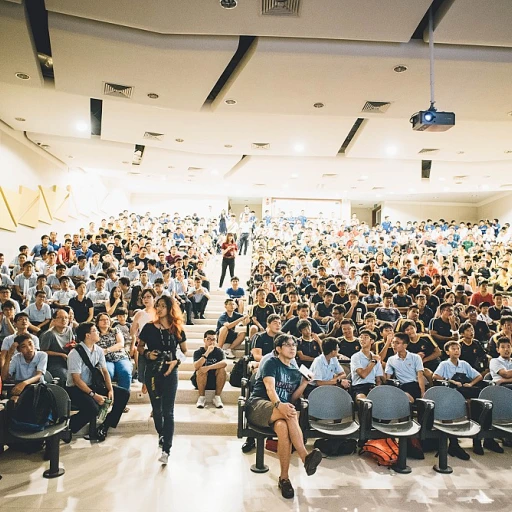
Understanding Remote Recognition
The Value of Recognizing Remote Achievers
In the realm of remote work, acknowledging accomplishments is crucial to maintaining employee motivation. Design employee recognition programs specifically tailored for remote settings helps recreate the sense of community typically found in a physical office. While traditional awards such as employee of the month, quarter, or year have often been celebrated with plaques or certificates, it's important to adapt these practices for remote environments.
Employers can use digital platforms to facilitate these nominations and award ceremonies, ensuring that remote employees feel valued despite their physical distance. An effective remote recognition program considers the unique challenges faced by remote team members. This involves recognizing hard work and contributions that may otherwise go unnoticed when working from different locations.
A properly structured employee of the quarter program involves a fair and transparent nomination process. Utilize nomination forms that allow managers and associates to highlight achievements, and consider incorporating visual awards, like a digital certificate or a month pin, to celebrate successes.
Employing tools that enhance visibility of achievements ensures everyone, from directors to managers, stays informed about the hard work being recognized. Remote recognition aims to foster community by providing opportunities for employees to engage with one another, even when geographical barriers exist. This approach not only boosts morale but also strengthens team dynamics over the long term.
Criteria for Selecting the Remote Employee of the Quarter
Highlighting Distinctive Qualities for Recognition
Recognizing outstanding performance in a remote setting requires identifying specific criteria that differentiate one employee's contributions from another. While physical office environments often allow for visible cues of hard work and leadership, remote work demands a more nuanced approach to recognizing achievements. Human resources managers and directors must establish clear guidelines that do not just focus on end-of-year accomplishments but allow for monthly and quarterly recognitions as well.
Award criteria often include contributions that reflect excellence in customer service, problem-solving, and innovation. Nomination forms for these awards typically require input from multiple sources, including peers, managers, and self-assessments, to create a comprehensive view of the nominee’s impact. Programs may also consider consistency in meeting deadlines, quality of projects, and adaptability to changes. Utilizing a structured nomination process ensures that award programs are fair and transparent, thereby increasing their validity and acceptance among remote employees.
A well-designed recognition system might include tangible tokens such as a certificate of achievement, an associate of the month pin, or even a full color lapel pin commemorating the employee quarter. Many companies also opt for non-tangible awards like free shipping of a gift item, adding a personal touch that can be enjoyed from any remote office location. By crafting these criteria carefully, companies can maintain high levels of motivation and satisfaction among remote employees.
Challenges in Remote Employee Evaluation
Evaluating Remote Employees: Challenges and Considerations
In the context of remote work, evaluating employees for recognition programs, such as "Employee of the Month" or "Quarter Program," presents unique challenges. Without the physical presence in an office, managers must adapt their methods to ensure fair and comprehensive evaluations. These evaluations influence key programs and awards like the Annual Employee Awards and Employee of the Year certificates, which are crucial for maintaining motivation and acknowledging hard work.
One significant challenge is measuring performance primarily through digital interactions and outputs. Traditional in-office assessment tools might not effectively capture the complexities of remote work. The subtle dynamics visible in face-to-face interactions, tangible workplace achievements, and the personal touch of a director or manager's observation are often lost in virtual environments.
To combat these challenges, organizations might leverage technology to bridge the gap. Tools like specialized HR software can track productivity, while feedback apps enable peers and leadership to recognize employee achievements more democratically. But the design of these programs should consider pitfalls like the underreporting of achievements by quieter associates or customers service employees.
- Data Overload: Unlike in a physical office space, remote work can lead to overwhelming amounts of data from various digital platforms. Properly sifting through these can present logistical difficulties in nomination processes for awards like the Lapel Pin Awards or quarterly recognitions.
- Implicit Bias: Managers who are not used to working remotely may unconsciously favor employees who they interact with more frequently online or who log the most hours, not taking into account outcomes or personal challenges faced by remote workers, which could skew month, quarter, or year nominations.
- Lack of Formal Recognition Events: Virtual ceremonies for accolades like the Employee Month Award, while essential, lack the personal impact of in-person events, potentially diminishing their effectiveness.
Despite these obstacles, organizations that successfully navigate remote evaluations often benefit from more inclusive and intentional recognition practices. Companies adopting remote work long-term may draw on successful case studies of recognition programs to address these challenges effectively, ensuring remote employees are celebrated justly and motivated consistently.
For more on how remote work has reshaped traditional office dynamics, you might want to explore the benefits of remote work at the Yard in Greenpoint.
Tools and Technologies for Remote Recognition
Streamlining Recognition with Innovative Tools
Recognizing the achievements of remote employees is no longer confined to in-office celebrations. The transition to remote work has spurred the development and adoption of various tools and technologies that facilitate recognition from afar, strengthening employee connection and maintaining motivation within teams. Organizations seeking to implement a successful employee recognition program can utilize a variety of digital solutions. Here are some noteworthy options:- Recognition Platforms: Numerous online platforms are tailored specifically for providing peer-to-peer recognition. These platforms often include features such as nomination forms for employee of the month, quarter, or year awards, and the ability to award a virtual certificate or pin as a token of appreciation.
- Communication Tools: Keeping the team connected and informed is crucial. Tools like Slack or Microsoft Teams have built-in features to celebrate achievements, allowing announcements and award presentations to be made in real-time, reinforcing the impact of the awards employee receive.
- Integration with HR Systems: Advanced recognition programs can be seamlessly integrated with existing human resources systems. This allows managers and directors to automate recognition processes and track progress over time, reducing manual work and increasing program efficiency.
- Shipping Perks: While physical awards such as a lapel pin or an employee of the quarter award can be shipped to remote workers' locations, some platforms offer free shipping as an added benefit. This makes it easier for managers to acknowledge hard work with tangible rewards that employees can proudly associate with their accomplishments.
Impact of Recognition on Remote Team Dynamics
The Ripple Effect of Recognition in Virtual Teams
Remote recognition can have profound effects on team dynamics. The practice of acknowledging exceptional employees - whether through an employee of the month, quarter, or even year program - has implications that extend beyond merely handing out awards. When team members feel valued, their engagement and productivity levels tend to rise, influencing the overall atmosphere within a virtual office setting.
Incorporating a structured awards program, complete with lapel pins, certificates, and even a nomination form, can not only make employees feel appreciated but also celebrated for their hard work. This bolstered motivation often leads to enhanced collaboration and a better customer service experience, as all team members benefit from a culture where excellence in work is recognized and rewarded.
Beyond individual morale, recognition programs like a quarter award or a company-sponsored lapel pin campaign can foster a sense of community and shared responsibility among associates. Programs designed by managers, directors, or human resources teams exhibit that the leadership values contributions, which can enhance loyalty and retention across the board.
Remote recognition also has a tangible impact on teams' creativity and innovation. Awards like design employee of the month or awards employee for university project success encourage the pursuit of new ideas. This recognition acts as a catalyst, encouraging associates to push boundaries, take calculated risks, and drive the organization forward.
Recognition's influence extends even to recruitment. A company with a robust employee awards program offers a competitive edge in attracting top remote talent. Future employees often value companies where hard work and achievements are celebrated, knowing their potential contributions will not go unnoticed.












